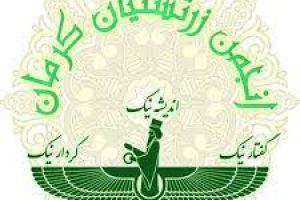The remnants of the Achaemenid Empire serve as a testament to the empire’s unique approach to art and creation of masterpieces that had dazzling magnificence and captivate the eyes of spectators, even today. One among the Achaemenids’ surviving works exhibits a small example of their fine art. This piece is referred to as the “Golden Bracelet of Shirdal.” This bangle is truly astounding and remarkable in its exquisite and impressive craftsmanship.
“Dal” is a vulture species. Figures made of body of a “dal” and the head of a lion are also called “shirdal”. Shirdals (also known as griffins) are imaginative and legendary beings carrying with them many mysterious signs and symbols which are rooted in ancient beliefs and customs.
ion presence was widespread throughout the ancient world. This artistic style was not exclusive to the Achaemenians; other ancient civilizations also employed it. shirdal occupied an important and conspicuous role within ancient architecture. In addition to mirroring the magnificence of the era, they also embodied a symbolic notion and concept. However, it is crucial to acknowledge that the Shirdals originated from the Aryans. Those who assert that this antiquated symbol originates from the Egyptian civilization are unequivocally mistaken and are communicating an erroneous notion. Shirdals originated with the Aryan civilization and disseminated throughout the ancient world, as evidenced by archaeological indicators.
The present golden armlet (shirdal”, previously referred to, is not what it was originally. Scholars hypothesize that previously affixed to this bracelet were jewels and valuable stones; however, they have since been removed. Archaeologists refer to a collection of artifacts known as the “Treasure of Amu Darya,” of which the gilded armband is one of the surviving items.
The Amu Darya Treasure was discovered during archaeological excavations between 1877 and 1880 AD in the region southwest of Tajikistan and close to the Afghan frontier. Obviously, individuals discovered this Achaemenid treasure prior to archaeologists discovering it, and it appears that they even appropriated some of its artworks! Archaeologists discovered 170 gold and silver fragments in addition to 200 Achaemenid coins. This treasure, which includes the shirdal golden armband, was transported to the British museums, and is now housed in Albert and Victoria museums as well as at British museum.
Ancestral legends attributed mystifying abilities to the lion and the eagle. Even in the civilization of the indigenous peoples of Latin America, the eagle was regarded as possessing such an enigmatic power. Consequently, the lion and the eagle came to represent the kingdom in the Aryan culture and were erected in shrines to inspire reverence as formidable and impregnable protectors. Signs of this emblem (Shirdal) date back to the third millennium BCE. Subsequently, the Aryan emblem of the lion proliferated swiftly across the antiquity and evolved into a recurring artistic style. The Egyptians, who also borrowed it, regarded it uniquely and made extensive use of it.
The Achaemenid golden armband (shirdal) has a symmetrical designed carved on it, featuring two mythical creatures that are positioned at opposite ends of a ring and face one another. As though a mirror were placed in front of one of the two Shirdals and the other were a reflection of the former that had materialized in an imaginary mirror, the two Shirdals’ slender and exquisite forms are identical and have been crafted with extraordinary skill and the wings slightly pent at the tip, gave it a special beauty. Partially embossed and featuring a curvature in its curved portion, the ring connecting the two shirdals may look like a heart to the observer. The ring features a design that replicates the proportions of two lions. Thousands of works, including this armband, aptly illustrate the profundity of Achaemenid artistic expression and demonstrate the Achaemenians’ unique and consistent stance on the fine arts. Put simply, the golden bracelet “shirdal” reflects the aesthetic side of achaemenid art.
Nonetheless, it is worthwhile to spend hours contemplating the intricacies and beauty of this priceless Achaemenid creation in order to discern the intellect and sensibility that guided the Achaemenid master in crafting this bright and symbolic masterpiece.










